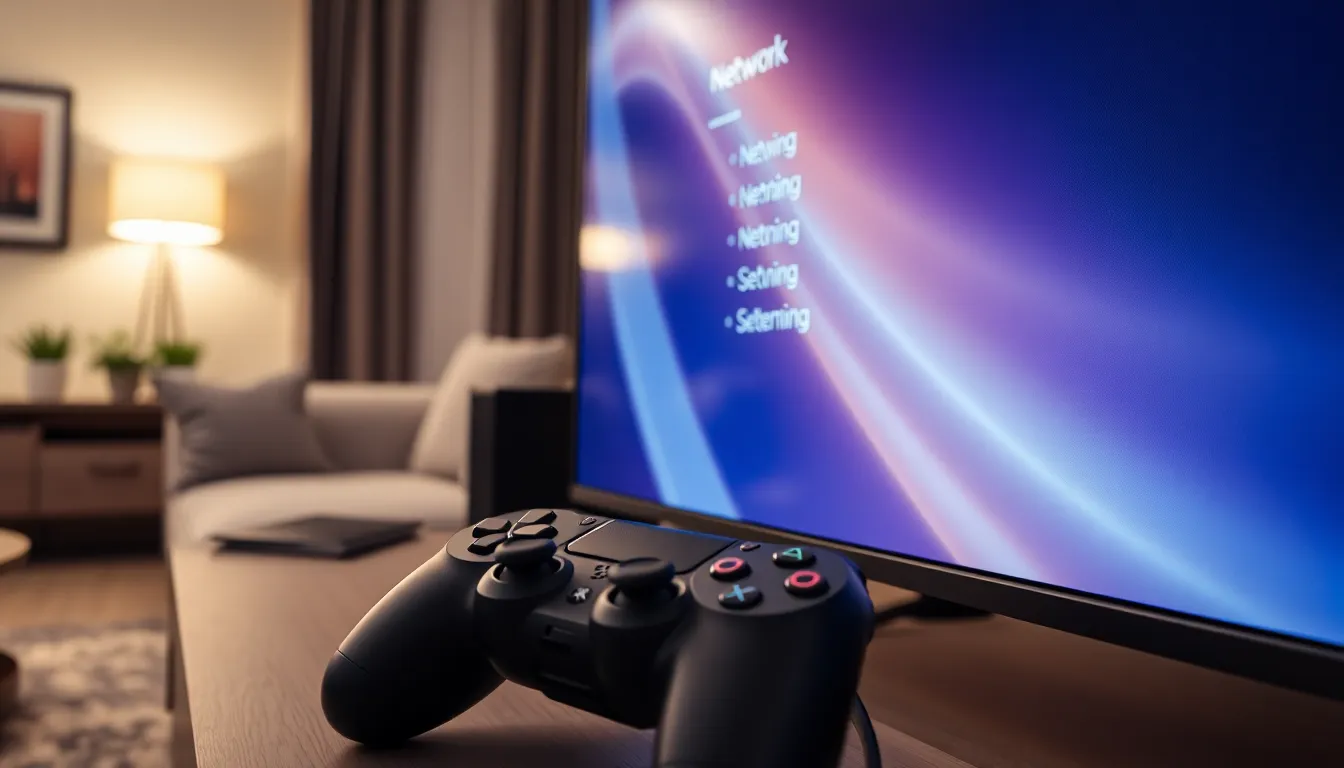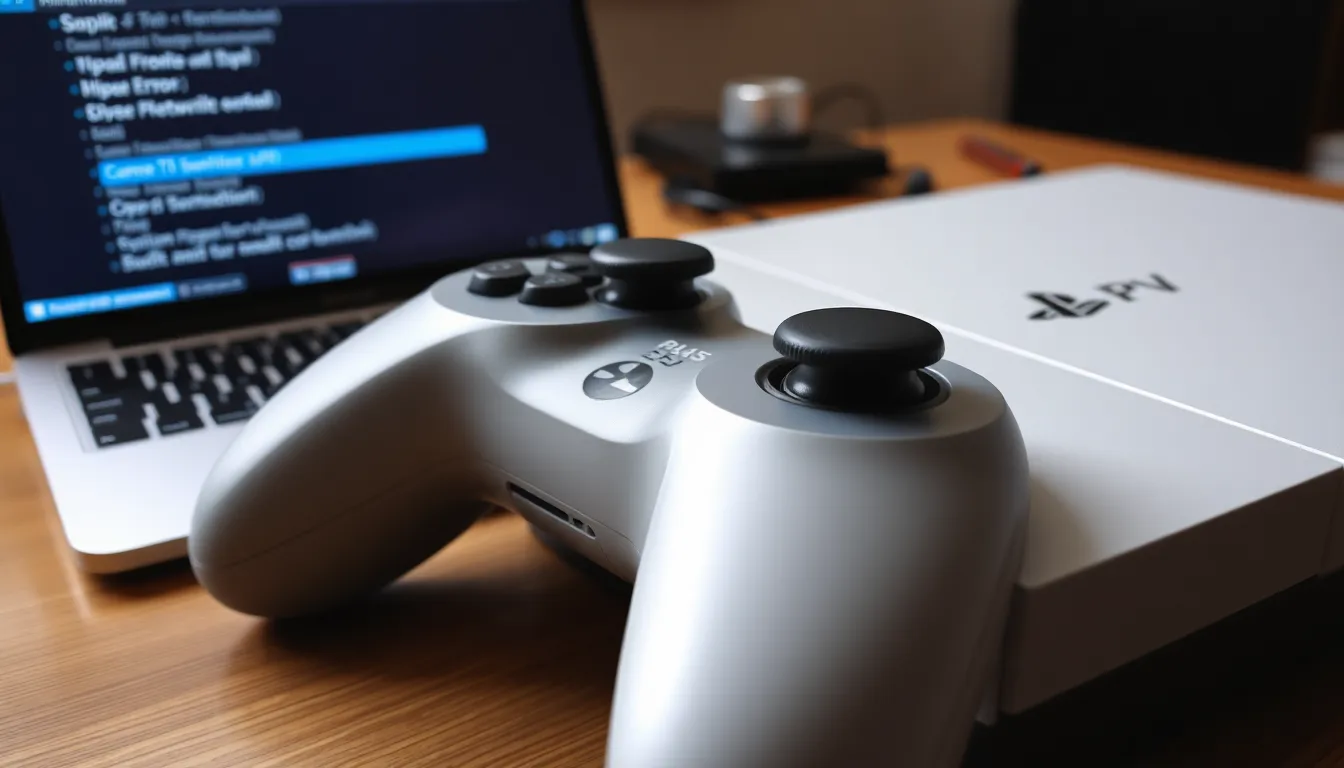Picture this: you’re all set for an epic gaming session on your PlayStation, snacks in hand and your favorite game loaded. Suddenly, the dreaded DNS error pops up, leaving you staring at the screen like a deer caught in headlights. Frustrating, right? You’re not alone. Many gamers have faced this digital hiccup, and it can feel like a cruel joke from the gaming gods.
Table of Contents
TogglePlayStation DNS Error
Gamers frequently face DNS errors that disrupt their gaming experience on PlayStation. Understanding this issue helps in troubleshooting and resolving it effectively.What Is DNS?
DNS stands for Domain Name System. It translates user-friendly domain names into IP addresses, enabling connectivity to various online services. Without DNS, accessing websites and online game servers becomes challenging. The system functions like a directory, allowing devices to communicate with each other via the internet. PlayStation relies on DNS to connect to its network and maintain a seamless gaming experience.Common Causes of DNS Errors
Several factors contribute to DNS errors on PlayStation. Network configuration issues often lead to miscommunication between the console and DNS servers. An unstable internet connection can also prevent proper DNS resolution. ISP problems pose another potential risk; sometimes, service providers experience outages or congestion that affects DNS response times. Additionally, incorrect DNS settings or outdated firmware can cause these errors. Identifying the root cause is crucial for effective troubleshooting.Troubleshooting Playstation DNS Error


Steps to Resolve DNS Issues
First, check the internet connection. A stable connection is essential for the PlayStation to access online services. Next, navigate to Network Settings on the console. Select “Set Up Internet Connection” and choose the preferred method, either Wi-Fi or LAN. After that, choose “Custom” setup to manually enter DNS settings. Use public DNS servers, such as Google’s DNS (8.8.8.8 and 8.8.4.4) or Cloudflare’s (1.1.1.1), for optimal results. Lastly, test the connection to ensure that the DNS error is resolved.Resetting Your Network Settings
Resetting network settings can restore connectivity. Start by accessing the Settings menu on the PlayStation. Select “Network,” then choose “Set Up Internet Connection.” Opt for “Custom” setup and when prompted, select “Automatic” for IP Address Settings. Configure DNS as “Manual” and input preferred DNS server addresses. To finalize the process, go back to the Network menu, select “Test Internet Connection,” and confirm whether the error persists. This reset may restore access to online features.Preventing Playstation DNS Error
Maintaining a stable connection and ensuring updates are crucial for preventing PlayStation DNS errors.Best Practices for Stable Internet Connection
Stable internet connections support smooth gaming experiences. Gamers should use a wired Ethernet connection instead of relying on Wi-Fi, as wired connections reduce interference. Optimizing the router placement enhances signal strength, leading to fewer disruptions. It’s important to limit connected devices to prevent bandwidth congestion, particularly during gaming sessions. Scheduling bandwidth-heavy tasks for off-peak hours prevents interference during playtime. Regularly restarting the modem and router helps clear temporary issues, contributing to improved connectivity.Keeping Your Playstation Updated
Keeping the PlayStation updated is key for preventing DNS errors. Automatic updates ensure the system runs the latest software. Checking for updates manually provides an additional layer of security. Gamers should access the Settings menu, navigate to System Software Update, and install any pending updates. Ensuring game files are also updated can resolve compatibility issues that affect network connection. Regular updates include critical patches and bug fixes that enhance overall system performance, reducing the likelihood of encountering DNS errors.Seeking Further Assistance
Technical support is crucial when troubleshooting persistent DNS errors on PlayStation. Gamers might find that self-resolution methods no longer suffice, indicating a need for professional help.When to Contact Support
If a DNS error continues after trying multiple fixes, contacting PlayStation support is essential. Users should reach out when experiencing unresponsive systems or ongoing connection issues. When settings appear correct yet problems persist, professional assistance ensures effective problem resolution. Immediate support is advisable if network devices remain disconnected despite troubleshooting efforts.Resources for PlayStation Users
PlayStation offers several resources for users experiencing DNS errors. The official PlayStation website features troubleshooting guides and community forums for gamers seeking shared solutions. Online databases provide access to FAQs, articles, and videos focused on resolving DNS-related issues quickly. Additionally, contacting customer support directly via phone or live chat can expedite assistance. Utilizing dedicated social media channels also allows gamers to engage with support representatives for real-time help.Conclusion
Dealing with a PlayStation DNS error can be frustrating but understanding its causes and solutions makes it manageable. By following the troubleshooting steps outlined and implementing preventive measures, gamers can minimize disruptions to their gaming experience. Staying proactive with network stability and keeping the system updated plays a crucial role in avoiding these issues. If problems persist despite efforts to resolve them, reaching out to PlayStation support can provide the additional assistance needed. With the right approach, gamers can quickly get back to enjoying their favorite titles without the hassle of connectivity issues.
Laura is a vibrant force in the world of gaming blogging, with a special place in her heart for the boundless realms of Minecraft. Her passion for crafting intricate worlds and embarking on daring adventures shines through in every post… especially if it’s about Minecraft.



